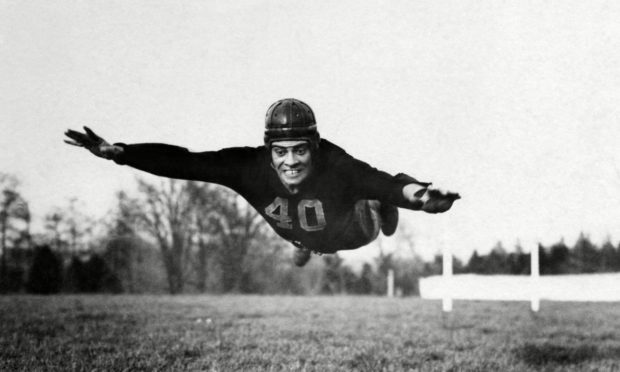There was a quote pinned on the wall in a school gym block in Aberdeen which I looked at before going in for my flu jab.
It read: “It’s not whether you get knocked down, it’s whether you get up again.”
Maybe they have ferocious sports sessions here, I wondered. But it was meant as an uplifting inspirational message – and a metaphor for life, of course. Maybe it is a significant one in our pandemic hell.
In the faltering early days of my journalistic career, when superiors regarded me as borderline useless, I imagined myself as a tennis ball to feel better. My theory was the harder I was hit, the higher I would bounce back. I kept that going for years. I tried to learn from my mishaps and refused to accept defeat.
The quote on the wall was attributed to Vince Lombardi without further elaboration. He was the son of an Italian butcher in New York and became one of America’s greatest sports coaches. Businesses copied his motivational methods.
There were also exhortations from the school itself on the gym corridor walls, ranging from “this is physical education, not recreation” to “don’t forget your kit”. These are familiar to those of us who can remember our PE lessons. They are age-old warnings to young shirkers, dodgers and lazybones. I pulled myself away and stepped into the gym, which was now a makeshift NHS flu immunisation centre for the weekend.
At first glance it looked like a casualty clearing station – nurses everywhere and a sea of numbered treatment stations spaced out.
It was a miserable, wet gale-lashed Saturday morning. But the NHS person checking us in was bright, cheery and put us at ease instantly. My wife and I were split up briefly to make our way to separate jab stations. I shivered a little, not because I was worried about the needle or that it was cold in this cavernous industrial-looking temple for juvenile physical exertion. No, it brought school memories flooding back. I spent five years in a place like this and was unable to successfully perform a single handstand for the entire period.
My wife and I were keen to know more about our nurses: my wife asked whether hers felt in danger doing this all day. She replied confidently: “I know I am fit, and determined to cope with anything that’s thrown at me.” She sounded as focused as one of Lombardi’s football linebackers after a Green Bay Packers team talk.
I asked mine where all these nurses had been drafted from. She was a health visitor, but said they were also a mix of hospital and community nurses. To me, in their matching uniforms, they looked like a thin blue line defending us on a battlefield.
I was delighted we had made the cut at last on NHS Grampian’s flu immunisation list. Our fellow attendees looked somewhat subdued and miserable. They needed a Lombardi pick-me-up.
It was all over in a flash, but we departed feeling we had something extra in our armoury to protect us during what looks like a dangerous winter ahead with twin threats of flu and Covid-19.
I read that some experts believed the worst of a flu epidemic might be avoided due to a bigger take up of immunisations, and better awareness of basic hygiene and distancing. I hope they are right, but for every expert saying one thing there are others saying the opposite. No wonder people are at such a low ebb and distrusting of what they are told officially. We are unable to distinguish between the accuracy of scientific fact, “predictions” or “scenarios” in waves of panic-driven statistics.
People are yearning to trust in something; a flu vaccine is a start, but a Covid-19 one would be better. In the school car park I felt happy NHS Grampian was getting its act together after a terrible launch. It ran out of vaccine, helplines were jammed and appointments arrived late.
Mind you, our letters were cutting it fine: they arrived at noon on Friday for appointments the next morning at 10.30. I think it’s only fair I offer praise to NHS Grampian after giving struggling bureaucrats a battering (deservedly) in my column recently.
Credit where credit is due after a swift, friendly and professional frontline service. Public confidence in health strategy is vital.
http://www.nhsgrampian.org/nhsgrampian/gra_display_simple_index.jsp?pContentID=10336&p_applic=CCC&p_service=Content.show&
;
As Vince said: “Confidence is contagious, so is lack of confidence.”
David Knight is the long-serving former deputy editor of the Press and Journal











